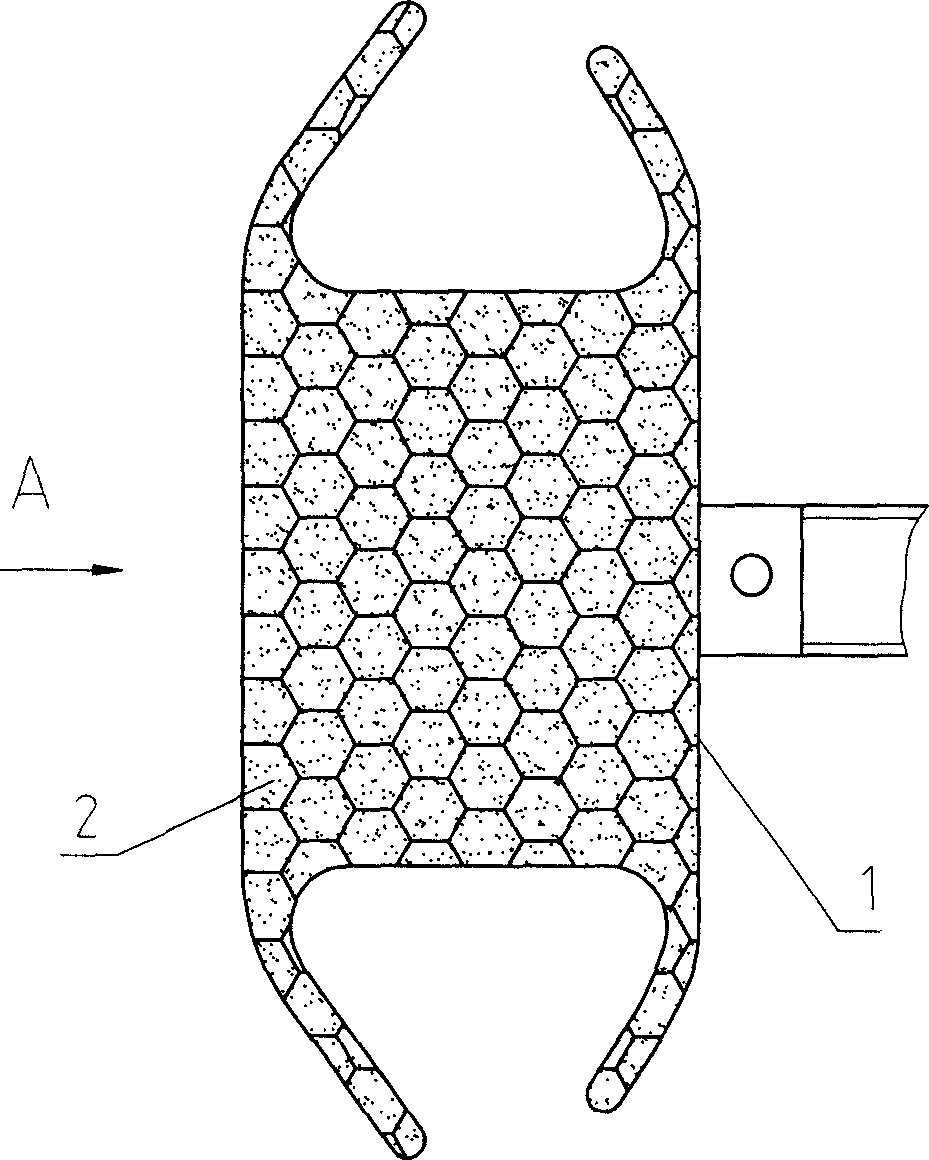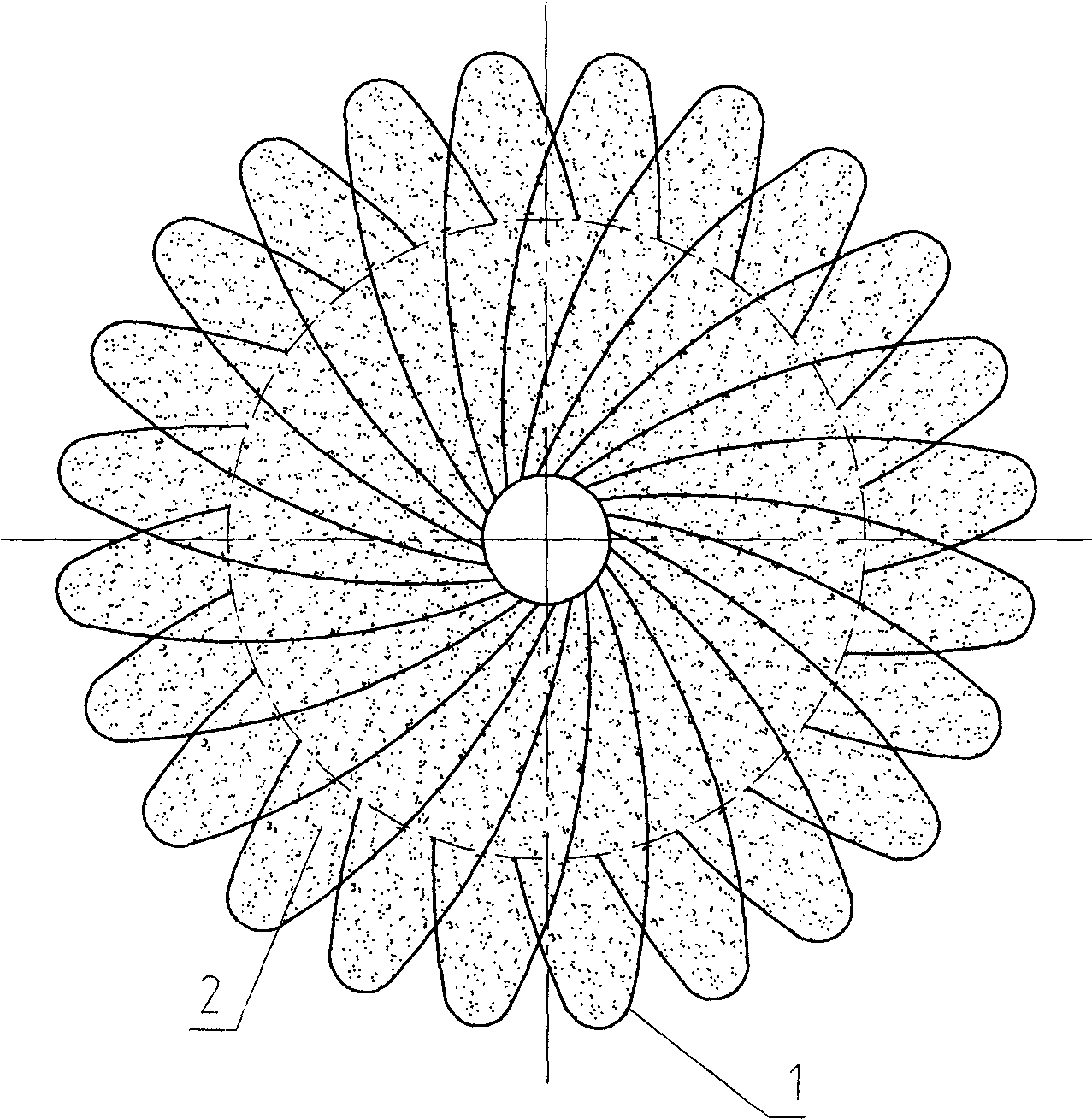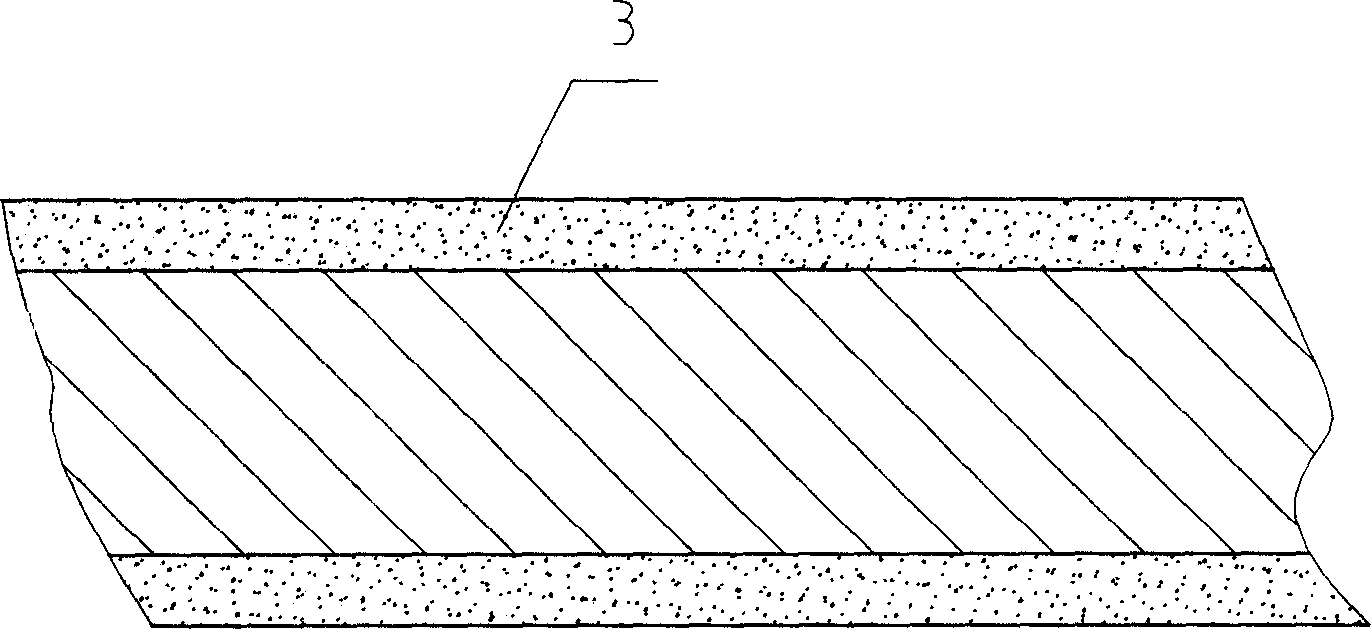Occlusive device for treating septal defect of congenital heart disease
A congenital heart disease and occlusion device technology, applied in the field of medical devices, can solve the problems of difficult long-term toxic and side effects of metals, arrhythmia, application restrictions, etc., achieve chronic damage and mechanical stimulation, and reduce metal toxic and side effects Effect
- Summary
- Abstract
- Description
- Claims
- Application Information
AI Technical Summary
Problems solved by technology
Method used
Image
Examples
Embodiment Construction
[0013] Figure 1 to Figure 3 It is an embodiment of the present invention used for occlusion of ventricular septal defect (VSD). The stent 1 made of a nickel-titanium alloy wire mesh with a diameter of 0.002 to 0.003 inches is in the shape of a double-disk umbrella, and the stent 1 is filled with polymer The fat fiber 2, the metal wire of the stent 1 is covered with a layer of degradable biocompatible polymer material 3, the degradable biocompatible polymer material 3 in this embodiment can directly adopt the publication number CN1435438, published on the date It is the modified polylactic acid material provided in the Chinese Invention Patent Publication on August 13, 2003. The nickel-titanium alloy wire is used as the inner support, and its diameter is smaller than that of the metal wire of the traditional device. Under the premise of ensuring the strength of the whole support during production, the diameter of the nickel-titanium alloy wire can be pulled as small as possibl...
PUM
 Login to View More
Login to View More Abstract
Description
Claims
Application Information
 Login to View More
Login to View More - R&D
- Intellectual Property
- Life Sciences
- Materials
- Tech Scout
- Unparalleled Data Quality
- Higher Quality Content
- 60% Fewer Hallucinations
Browse by: Latest US Patents, China's latest patents, Technical Efficacy Thesaurus, Application Domain, Technology Topic, Popular Technical Reports.
© 2025 PatSnap. All rights reserved.Legal|Privacy policy|Modern Slavery Act Transparency Statement|Sitemap|About US| Contact US: help@patsnap.com



